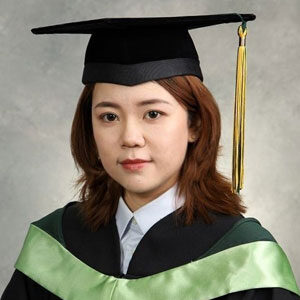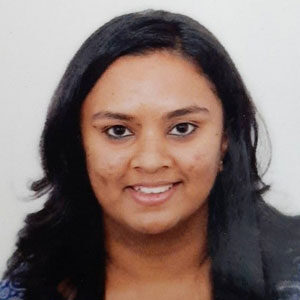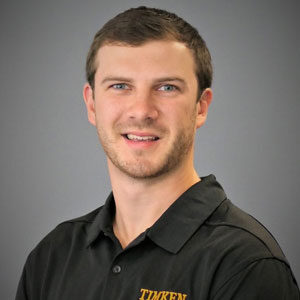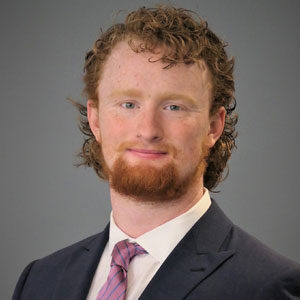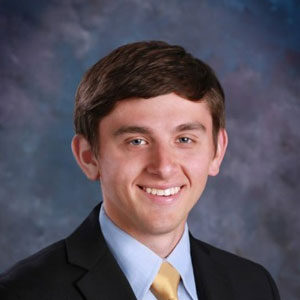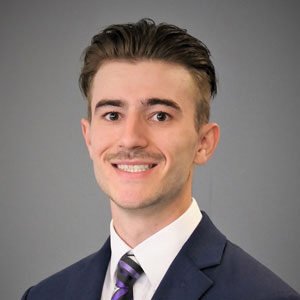There’s no such thing as a self-starter when solving for the world’s toughest technical challenges. Timken invests in ongoing training that quickly turns its new engineers into industry and product experts. The result is more efficient problem solving that supports the next generation of customer innovation.
When John Szarka, director of the company’s bearing product pipeline, joined Timken 17 years ago, he was a recent college graduate taking his first job as a new sales engineer. He says Timken made the transition from student to customer-centric problem solver much easier.
“How can you apply the hundred-year history of a company when you only have one year of experience?” Szarka asks. “It comes down to training. Timken trains engineers on the fundamentals of applications, products and markets so we can connect the dots and solve problems faster for customers.”
Trained by the Experts
Timken training is developed and led worldwide by people who have practical experience in engineering and customer relationships. This year’s class of next gen problem solvers hail from all over the world.
Mithun Babu H, Senior Application Engineer
Location: Bengaluru, India
What would be your dream job in 5 years?
“My dream is to be a bearing expert and learn to have complete knowledge on bearing design, development, application, and its failure modes and incorporate my knowledge in supporting customer in using the right bearing in their machines with correct maintenance practice.”
Hannah Sponaugle, Service Engineer
Location: World Headquarters, Ohio, USA
What advice do you have for current engineering college students?
“Get as much hands-on experience as possible. Meet as many people from different backgrounds as possible. Never stop learning.”
Johan Olsson, Sales Engineer
Location: Sweden
Favorite historical engineering feat?
“The aqueducts built by the Romans.”
Kaitlyn Wickline, Associate Sales Engineer
Location: Detroit, Michigan, USA
Why did you pursue a degree in engineering?
“As a kid I grew up playing with Legos and was always fascinated by anything and everything science related. In high school I participated in a NASA program that let me shadow some aerospace engineers and by the end of it I was dead set on pursuing engineering.”
Zhang Li, Service Engineer II
Location: Tianjin, China
What advice do you have for new associates?
“Don’t fight by yourself when you encounter a difficulty — know there is a team behind you who can help. Timken is a company that cultivates comprehensive ability and has a team to support you.”
Mingyu Li, Application Engineer
Location: Shanghai, China
What advice do you have for current engineering college students?
“Don’t be afraid of switching programs, you never know what field could be a better fit.”
Nick Leonard, Product Design Engineer
Location: World Headquarters, Ohio, USA
Why did you pursue a degree in engineering?
“When I was younger, I really liked to take things apart, put them back together, and figure out how they worked.”
K S Shambhavi, Application Engineer
Location: Bangalore, India
What would be your dream job in 5 years?
“My dream job in 5 years will be an engineering management role. I would want to use my technical and engineering knowledge to manage processes and people.”
R Soundharya, Application Engineer
Location: Bangalore, India
Why did you pursue a degree in engineering?
“I was always more inclined toward math and science. I also love problem solving and love doing puzzles. Plus, I would surely be contributing to the society which is a win-win.”
Gary Tomotchko, Associate Sales Engineer
Location: Chicago, Illinois, USA
Why did you pursue a degree in engineering?
“I always had interest in building things and being hands on. I wanted to get a degree that would allow me to get out of the office and see different things.”
Wang Gang, Senior Application Engineer
Location: Wuxi, China
What advice do you have for current engineering college students?
“Interest is the best teacher. It is better to develop in a field you like, so you can walk longer and farther on your journey.”
Zack Douglass, Service Engineer
Location: World Headquarters, Ohio, USA
Why did you pursue a degree in engineering?
“I chose to pursue a degree in engineering because I loved to figure out how things work and how things are made, and I wanted to be able to use that knowledge to help people.”
Adam Moresea, Associate Sales Engineer
Location: Territory Manager
What advice do you have for current engineering college students?
“Take chances through co-op and internship opportunities to develop an understanding of what you do and do not want to do in a future career.”
Alex Waye, Application Engineer
Location: World Headquarters, Ohio, USA
Why did you pursue a degree in engineering?
“In my sophomore year of high school, I joined my school’s robotics team. I always liked math and science, but on the robotics team, I fell in love with the teamwork necessary to find solutions to technical problems.”
Alison Coldwell, Associate Service Engineer
Location: World Headquarters, Ohio, USA
Why did you pursue a degree in engineering?
“I had several experiences growing up which helped me appreciate engineering and all the good it can do. One of the more notable experiences I had was when I got to see a wind tunnel modelling optimum placement of turbines to minimize energy loss.”
Anjali S, Application Engineer
Location: Bangalore, India
What advice do you have for current engineering college students?
“I would advise the next generation learners to embrace the opportunities to design, to think in a creative way, seek new challenges and work on real-time projects to understand the impact of engineering solutions in all sectors.”
Aymen Khefifi, Sales Engineer
Location: Tunis, Tunisia
Favorite historical engineering feat?
“The first successful diesel engine motor: 1893 – 1897.”
Colin Roy, Associate Sales Engineer
Location: Detroit, Michigan, USA
Favorite historical engineering feat?
“Volvo invented the 3-point safety belt in 1959. The company gave up their monetary interests in the invention and made the patent for this design available to other automakers to improve the overall safety of cars and people on the road.”
Dowen Kabula, Application Engineer
Location: World Headquarters, Ohio, USA
Why did you pursue a degree in engineering?
“Where I was born, in the Democratic Republic of Congo, there aren’t a lot of women in engineering. This reality motivated me even more to pursue a career in engineering and to be a role model for women who feel limited or are hesitant to pursue a career in the STEM field.”
Garrett Stears, Associate Sales Engineer
Location: Lovejoy by Timken, Downers Grove, Illinois, USA
Why did you pursue a degree in engineering?
“I wanted to work in a field where I can apply creativity to solve problems that make people’s life easier and drive the world to be a better place.”
Gian Marco Mauri, Service Engineer
Location: Milan, Italy
Favorite historical engineering feat?
“The industrial revolution and the development of the aerospace industry.”
Gina Morrison, Associate Sales Engineer
Location: World Headquarters, Ohio, USA
What advice do you have for current engineering college students?
“Engineering is a very broad degree that can be applied to a wide variety of jobs. Timken has a large network of engineers in positions from sales to R&D so it’s a great company to find your perfect fit!”
Preparing engineers to innovate for the real world
Globally all new Timken sales, service, application and design engineers complete the same Foundations of Timken Excellence program. This allows Timken to deliver a consistent customer experience worldwide.
During the first half of the six-month training, participants learn about the fundamentals of friction management, power transmission and how materials science impacts products that make those actions possible. They visit manufacturing facilities for hands-on training to understand Timken manufacturing processes and quality systems.
In the second half, engineers follow specific tracks based on their new roles. Sales engineers learn how to talk about Timken solutions and capabilities in ways that resonate with specific customers and their needs. Because what is important to a gear drive manufacturer and an industrial distributor, for example, varies.
Szarka notes that this training approach for sales engineers differentiates Timken with customers. “There’s a level of talent they know they’ll get from us,” Szarka continues. “Customers find the quality of our people and what they know coming in impressive.”
Meanwhile, service engineers who will visit end users at their sites, like a water treatment facility or food production operation, learn specific skills for their own roles. They practice assessing component and system conditions onsite and writing damage analysis reports that help determine whether they should be repaired or replaced.
Application and design engineers learn how to use Timken engineering tools and software for creating and selecting bearing products for applications ranging from renewable energy to agriculture to commercial aviation.
While the training curriculum is globally consistent, regional trainers customize it to accommodate local languages, cultures and markets. A hybrid of in-person and virtual learning is delivered from training centers in the U.S., India, France and China.
“We’re proud of that,” says John Byers, manager of technical development for North America. “We’ll focus on additional applications that are priorities for certain regions, like wind energy in China or rail in Africa.”
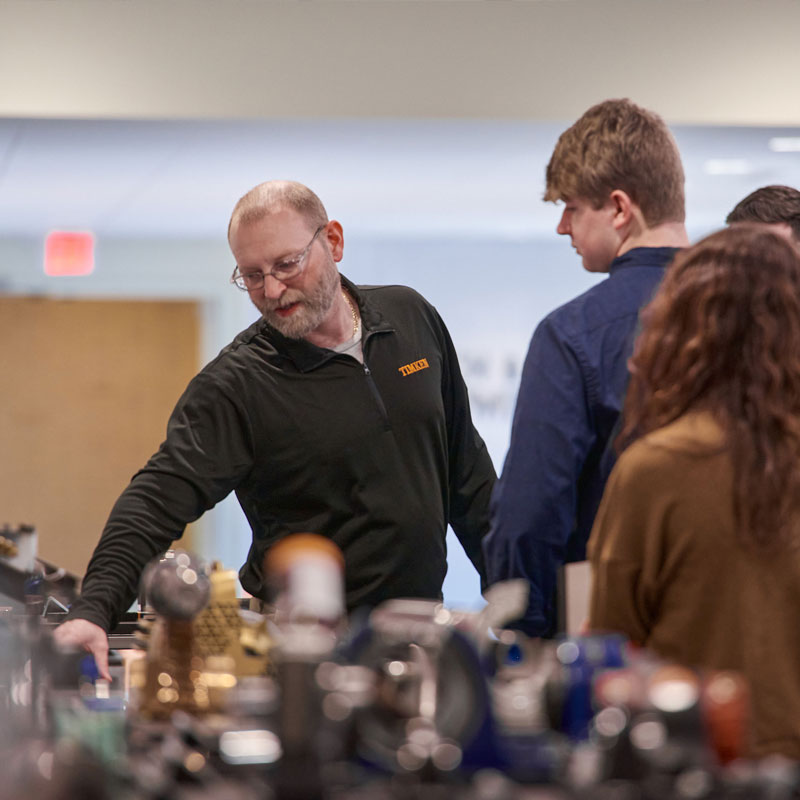
Tapping into the right resources
Timken trainers tap into industry best practices and trends to keep the curriculum fresh, and Timken often sets the standard for the industry. Bearing fundamentals courses offered by the American Bearing Manufacturer’s Association (ABMA) are based on Roller Bearing Analysis, a standard reference co-authored by Timken’s current director of global customer engineering.
“We’ve developed our own in-house version of the ABMA programs, customizing it to the specific needs of Timken,” says Byers. “We talk about the theory in Roller Bearing Analysis and discuss how we use it in our analysis tools. When application engineers do a calculation, they have more insight into why they get the numbers they do. Then they can articulate it to our customers along with our sales engineers.”
While bearing fundamentals remain constant, customer needs are always changing, and the Timken portfolio is always expanding. Byers notes that Timken training continues to evolve to address these changes by bringing in trainees from adjacent businesses and developing coursework around new industrial motion products.
“We’re focused on efficiency,” Byers says. “How can we train more efficiently so new engineers can support customers sooner? What do they need to know so they can help customers work more efficiently? Those are our goals for the future.”
Read more about how we train and invest in the next-generation of problem solvers, Timken apprentices.
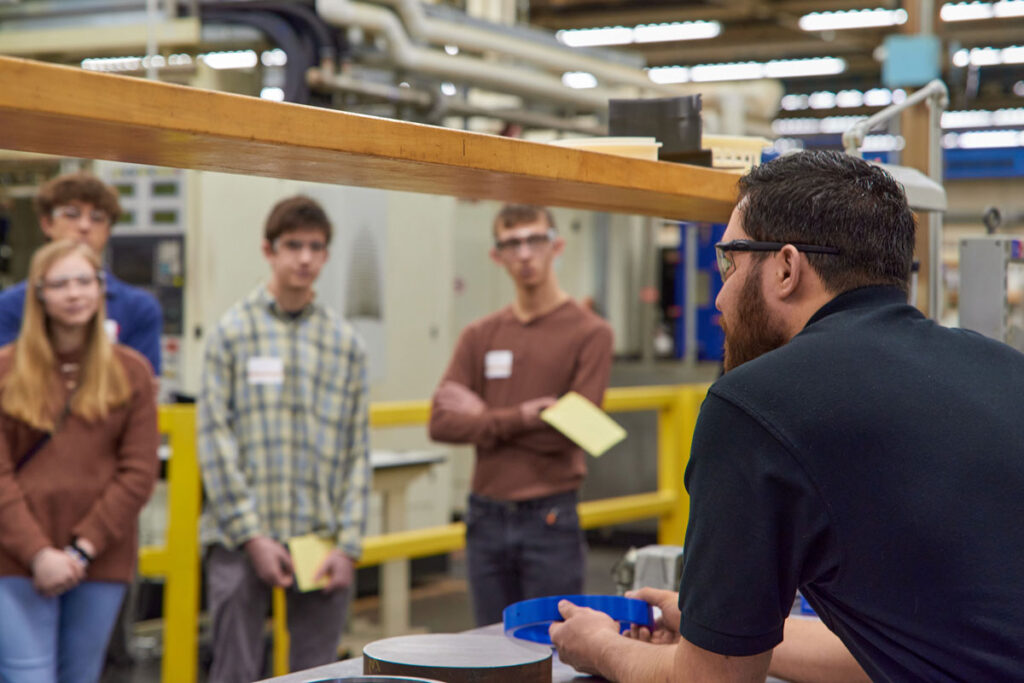
Last Updated: 2022/11/1
Published: 2022/10/30








